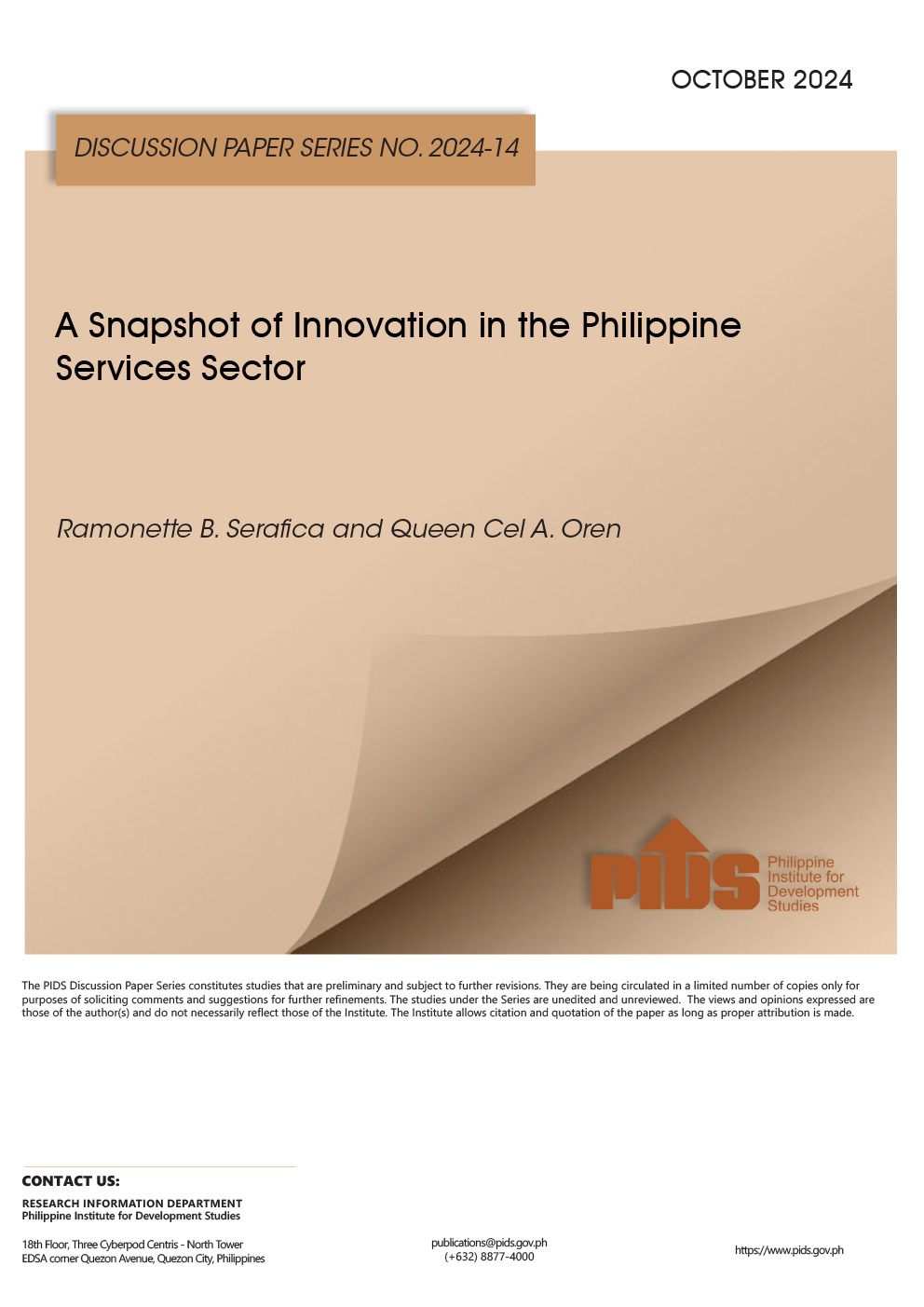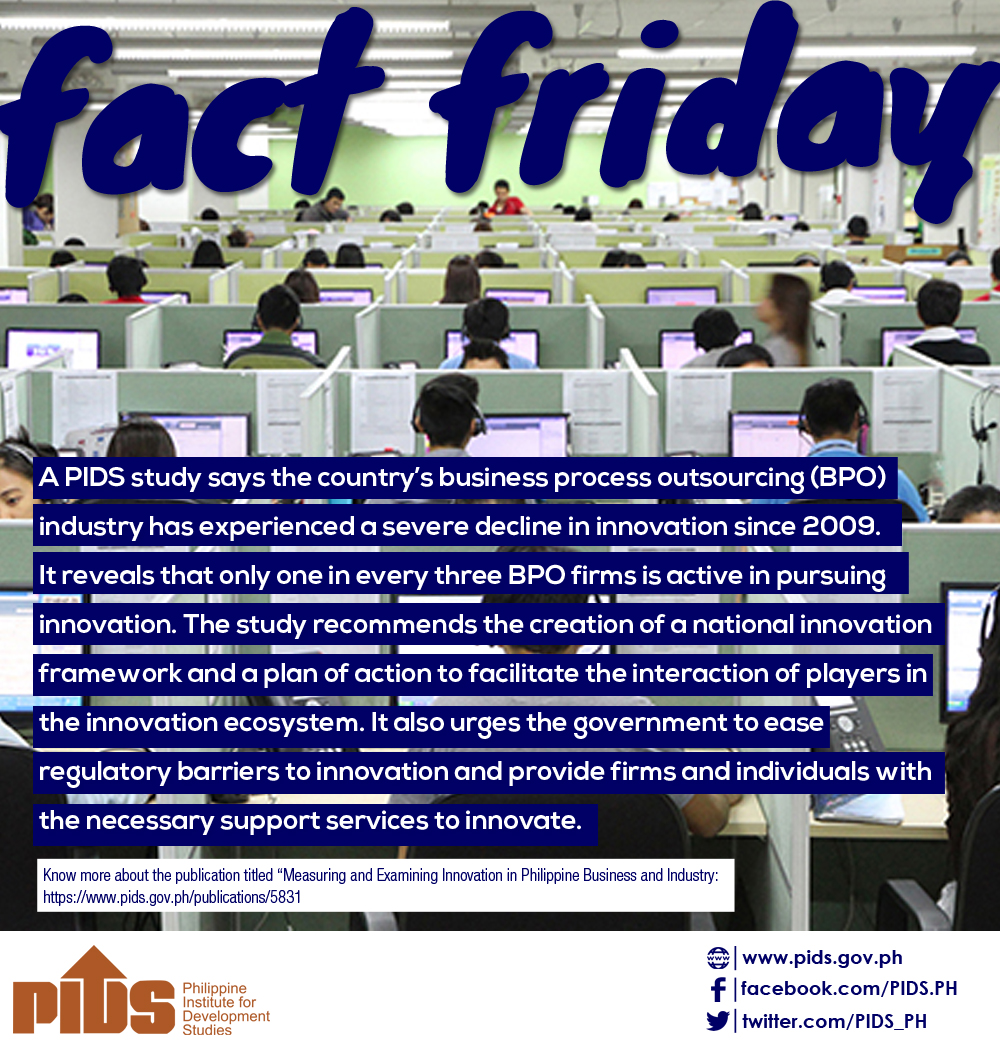The traditional adage is that innovation optimizes the evolution of performance. But for small and medium enterprises (SMEs) to fully take advantage of the benefits of innovation, hard evidence has to link innovation with improved firm performance. More importantly, the factors that influence firms to innovate, as well as those that discourage them, must be identified and analyzed.
These were the objectives outlined in Does Innovation Mediate Good Firm Performance, a paper recently released by state think tank Philippine Institute for Development Studies (PIDS). Authors Gilberto M. Llanto, president and Fatima Lourdes Del Prado, senior research specialist, add their analysis to the growing literature on innovation in the area of policymaking and development agendas.
National development relies on innovation, and SMEs in particular are considered by the ASEAN Economic Community as vehicles for integration and inclusive growth. To create an atmosphere that allows SMEs to have greater access and financing opportunities to generate innovation, the country’s leaders must make targeted policies.
Llanto and del Prado’s paper affirms that innovation increases sales and profit, and improves labor productivity. But what kind of innovation, and how do different factors, such as firm size, age, and foreign equity, affect the impact of innovation? The authors believe that the effect of each is important to distinguish.
Two Kinds of Innovation
A review of the literature undertaken by the authors shows that there are two ways firms can change and innovate–through product innovation or the adoption of new product or service, and through process innovation or the radical changes in the management and operation of a firm.
Interestingly, the authors demonstrate that a firm’s ability to undertake both or either type of innovation, and the disposition of the impact on the firm’s performance, is dependent on varying factors.
Supported financially and technically by the Economic Research Institute for ASEAN and East Asia (ERIA), PIDS commissioned the National Statistics Office (NSO) to survey manufacturing firms in CALABARZON. Their statistics show that a strong relationship between innovation activities and economic performance of firms exists.
Firm size, foreign equity, and industry sectors were important considerations for SMEs to invest in changes.
"Small-sized firms or start-up companies for instance, may find it more challenging to do product innovation than process innovation while large companies could typically undertake product and process innovations as a matter of routine,” the authors conclude.
Larger firms have more workers and a larger talent pool to enact both product and process innovations. But their years of experience also allow their leaders to view the importance of innovation to maintaining their market competitiveness.
Secondly, the authors affirm established literature cited in the works of Becheikh, Landry and Amara (2006) claiming that firms with foreign investors are more likely to innovate because they "supply domestic firms with scientific and non-scientific resources”, making them all the more capable to change up their processes or product designs.
Thirdly, the fundamental difference between product innovation and process innovation was also evident.
Sales, profit, and labor productivity linked with process innovation show that improving the way firms run their business by changing operating, marketing, and business strategies significantly and positively affect firm performance.
The same cannot be said for product innovation. Its impact on the firm’s performance is smaller compared with that of process innovation, and subject to the product’s ability to penetrate the market.
The authors recommend that policymakers focus on enhancing SMEs to access and finance innovations. Regulations and structural barriers to foreign investment would best be eased, as foreign equity increases SMEs’ likelihood to innovate their products and processes.












